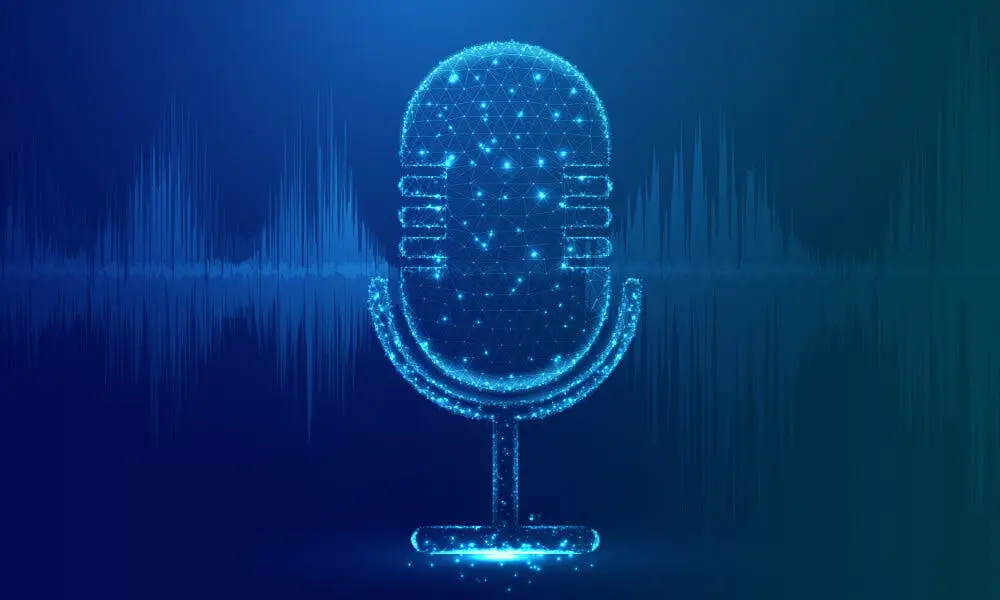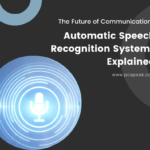Have you ever dreamed of a world where all your devices understand and respond to your voice commands? Well, that future is now closer than ever thanks to automatic speech recognition systems. Whether it’s dictating a text message, asking for directions from your GPS, or even controlling smart home devices, these systems are rapidly changing the way we communicate with technology.
In this article, I’ll uncover the technology behind automatic speech recognition systems and how they work. We’ll also explore their potential uses in different industries such as healthcare, education, and customer service. So get ready to dive into the fascinating world of automatic speech recognition and discover just how far this technology has come!
So, automatic speech recognition systems?
Communication is an essential part of our daily lives, and it has evolved significantly over the years. From sending letters to instant messaging, we have seen a tremendous shift in how we connect with one another. And as technology continues to advance, so does our means of communication.
One of the most exciting developments in this field is Automatic Speech Recognition (ASR) systems. These are software programs that use advanced algorithms and artificial intelligence to transcribe spoken words into written text automatically. In simpler terms, ASR systems can understand human speech and convert it into text without any manual input.
So how do these systems work? It all starts with a microphone that captures the audio input from a speaker’s voice. The sound waves are then converted into digital signals and sent to the ASR system for processing. The system uses complex algorithms to analyze these signals and match them with known patterns of language.
But what makes ASR systems truly remarkable is their ability to learn and adapt over time. They use machine learning techniques where they continuously improve their accuracy by analyzing large amounts of data and recognizing patterns in speech.
The potential applications for ASR systems are vast, ranging from improving accessibility for individuals with disabilities to enhancing customer service experiences through automated phone menus. They also have significant implications for industries such as healthcare, education, finance, and law enforcement.
However, like any technology, there are limitations to ASR systems as well. Factors such as background noise or accents can affect their accuracy; hence they may not be suitable for certain scenarios or languages.
Despite these challenges, experts believe that the future holds great promise for ASR systems. With ongoing advancements in natural language processing and artificial intelligence technologies, we can expect even more sophisticated versions of these tools in the coming years.
In conclusion, automatic speech recognition systems have revolutionized communication by bridging the gap between spoken words and written text seamlessly. As technology continues to evolve rapidly around us, it will be exciting to see how ASR systems will shape the way we communicate in the future.
Understanding the Technology Behind Automatic Speech Recognition Systems
Automatic Speech Recognition (ASR) systems are fascinating pieces of technology that allow computers to understand and interpret human speech. At the core of an ASR system is a complex combination of algorithms and linguistic models. These systems first break down spoken words into tiny, understandable parts called phonemes. Think of it like dissecting a sentence into individual sounds; this process helps the computer recognize patterns in our speech. Machine learning plays a crucial role here, as these systems learn from vast amounts of voice data to improve their accuracy over time. They can adapt to different accents, tones, and even background noises, making them incredibly versatile.
Once the sounds are identified, they get matched against existing language databases through something called language modeling. This stage determines which words likely come next based on what has been said already. It’s kind of like how we finish each other’s sentences! After processing all this information, the system outputs text or executes commands accordingly. The combination of sound recognition techniques and contextual understanding transforms casual conversation into useful actions—like sending messages or searching for information online—with just your voice! Overall, ASR makes interaction with technology smoother and more intuitive than ever before.

Decoding the Working Mechanism of Automatic Speech Recognition Systems
Automatic Speech Recognition (ASR) systems are fascinating tools that convert spoken language into text. At their core, these systems rely on a combination of sophisticated algorithms and vast amounts of data to understand human speech. When you speak into a device, it first captures the sound waves produced by your voice. These sound waves are then transformed into digital signals through a process known as sampling. This is akin to taking snapshots of the audio at various moments in time, allowing the ASR system to analyze and interpret what is being said.
Once the digital signals are ready, they pass through several stages for recognition. The system uses models trained on different languages and accents to break down sounds into smaller components called phonemes—think of them as building blocks of speech. It matches these phonemes against its extensive vocabulary using machine learning techniques, helping it predict which words were intended by the speaker. Factors like background noise or varying pronunciation can complicate this process; however, modern ASR systems utilize contextual clues and acoustic modeling to improve accuracy further. This blend of technology allows for real-time transcription that has changed how we interact with devices today, making communication smoother than ever before.
In essence, ASR systems represent a remarkable intersection between linguistics and computer science.
Read also: dictaphone
Innovative Applications of Automatic Speech Recognition in Various Industries
Automatic Speech Recognition (ASR) is changing the way we interact with technology across many industries. In healthcare, for instance, doctors are using ASR to dictate patient notes directly into electronic health records. This not only saves time but also enhances accuracy in documentation. Imagine a busy physician speaking their thoughts aloud while examining a patient; this allows them to focus more on care and less on paperwork.
Furthermore, ASR can assist patients who have difficulty typing or writing due to disabilities, making medical advice more accessible than ever.
In the realm of customer service, companies are harnessing ASR technology to improve communication between clients and representatives. Picture calling a support line where you can simply state your issue instead of navigating through complex menus! This streamlined approach leads to faster resolutions and happier customers. Additionally, sectors like education use speech recognition tools for language learning apps that help users practice pronunciation by providing instant feedback.
With such innovative applications blooming in various fields—like finance utilizing voice commands for transactions—the potential seems limitless! As we continue embracing these advancements, it’s exciting to think about how they will further transform our everyday lives and workplaces.
The Implications and Future Prospects of Automatic Speech Recognition Systems
Automatic speech recognition (ASR) systems have rapidly evolved and are now an integral part of our daily lives. These technologies allow machines to understand and interpret human speech, transforming how we interact with devices. Imagine talking to your phone or smart home assistant; the system processes your words, understands them, and responds almost instantly. This capability opens up exciting possibilities for people who may struggle with traditional input methods, like typing or using a mouse. Furthermore, ASR can facilitate communication across language barriers by providing real-time translation services.
Looking ahead, the potential for ASR systems is vast and filled with promise. As these technologies improve in accuracy and efficiency, they could revolutionize various fields such as education, healthcare, and customer service. For instance:
- In classrooms: Students could engage more interactively through voice-based learning tools.
- In hospitals: Doctors might dictate notes directly into patient records without needing to type.
- In customer support:The technology can help businesses streamline interactions by enabling voice-driven queries.
As these advancements continue to unfold, it will be essential to consider ethical implications surrounding privacy and data security while harnessing the power of automatic speech recognition effectively.



